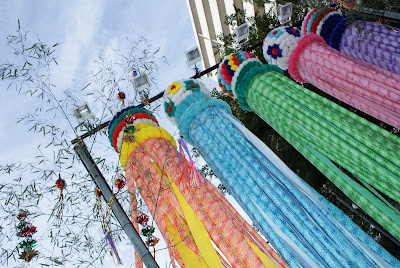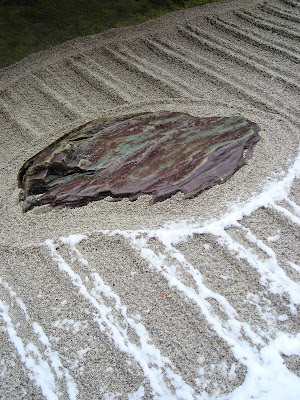Tamasaburo V
29th November 2011
More womanly than women themselves - that's how the men who play female roles in kabuki theatre are sometimes described.
But the onnagata - literally, female form - will say that they do not try to be women or even imitate them. They aim to be onnagata.
In 1629, the shogunate banned women from performing in public - ostensibly because of the audience brawling over actresses - so the female roles went first to boys and then to men.
Over the 360-odd years of kabuki history, men came up with an artificial image of women. These stage women walked a certain way, spoke a certain way, danced a certain way. The point was not to be true to real life; the point was to be true to kabuki.
Probably the most famous onnagata alive is Bando Tamasaburo V, known not only for his career in kabuki but also for crossing genres in collaborations with people like Yo-Yo Ma.
Earlier this month, Tamasaburo V was presented with the Kyoto Prize, a 50 million yen award given out each year by the Inamori Foundation, set up by the founder of manufacturing company Kyocera.
As part of a series of events held in conjunction with the award ceremony, Tamasaburo and the other two laureates - both scientists - held lectures, workshops and forums.
Most of the events took at the Kyoto International Conference Centre, where there was also a Tamasaburo photo exhibition. I took a lot of photos of people taking photos of photos.


In 2008, Tamasaburo appeared with China's Suzhou Kunqu Opera Company, playing the female lead (in photo of photo above) in The Peony Pavilion: a role that he said he spent three years preparing for.

A 2009 photo by Takashi Okamoto of Tamasaburo in
Sagi Musume (
Heron Maiden). The dancer plays both a tortured heron spirit and a girl in love.

Another notable role: the courtesan Akoya in
Dannoura Kabuto Gunki. Photo by Takashi Okamoto.

Make-up is an important part of role creation in kabuki, with actors adding their own individual twists to the "face" of a character.
A few days after the prize presentation was a student forum.
I still remember his hands. For a country where people prefer to use their hands to make things than to talk, Tamasaburo's hands carried on a dialogue all by themselves.

A lot of the photos looked like this: face clear and hands a blur because they wouldn't stop moving.
Here's one sequence:










Dancers are the people who move even when sitting still.






























































